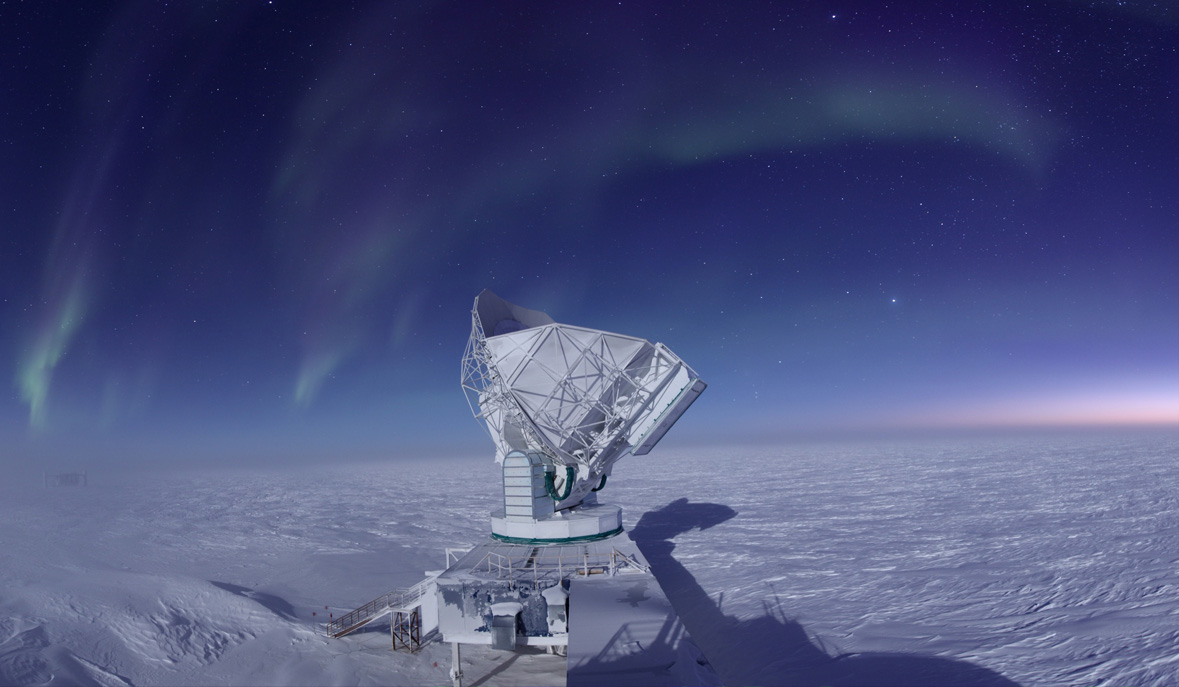by JOHN CARLSTROM
 The current South Pole telescope measuring small variations in the cosmic microwave background radiation that permeates the universe. Multiple telescopes with upgraded detectors could unlock additional secrets about the origins of the universe. PHOTO/Jason Gallicchio
The current South Pole telescope measuring small variations in the cosmic microwave background radiation that permeates the universe. Multiple telescopes with upgraded detectors could unlock additional secrets about the origins of the universe. PHOTO/Jason Gallicchio
Measuring tiny variations in the cosmic microwave background will enable major discoveries about the origin of the universe.
How is it possible to know in detail about things that happened nearly 14 billion years ago? The answer, remarkably, could come from new measurements of the cosmic microwave radiation that today permeates all space, but which was emitted shortly after the universe was formed.
Previous measurements of the microwave background showed that the early universe was remarkably uniform, but not perfectly so: There are small variations in the intensity (or temperature) and polarization of the background radiation. These faint patterns show close agreement with predictions from what is now the standard theoretical model of how the universe began. That model describes an extremely energetic event—the Big Bang—followed within a tiny fraction of a second by a period of very accelerated expansion of the universe called cosmic inflation. During this expansion, small quantum fluctuations were stretched to astrophysical scales, becoming the seeds that gave rise to the galaxies and other large-scale structures of the universe visible today.
Nautilus for more